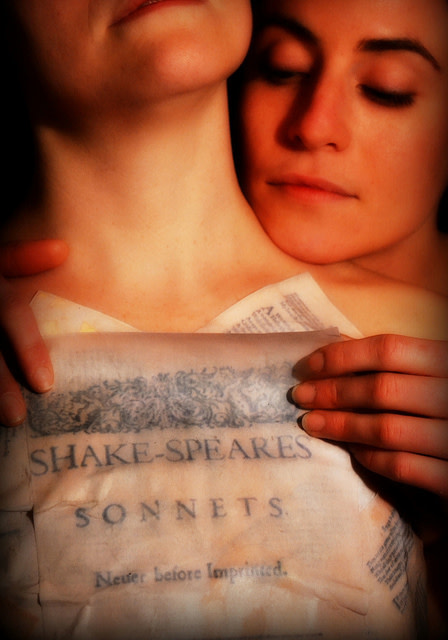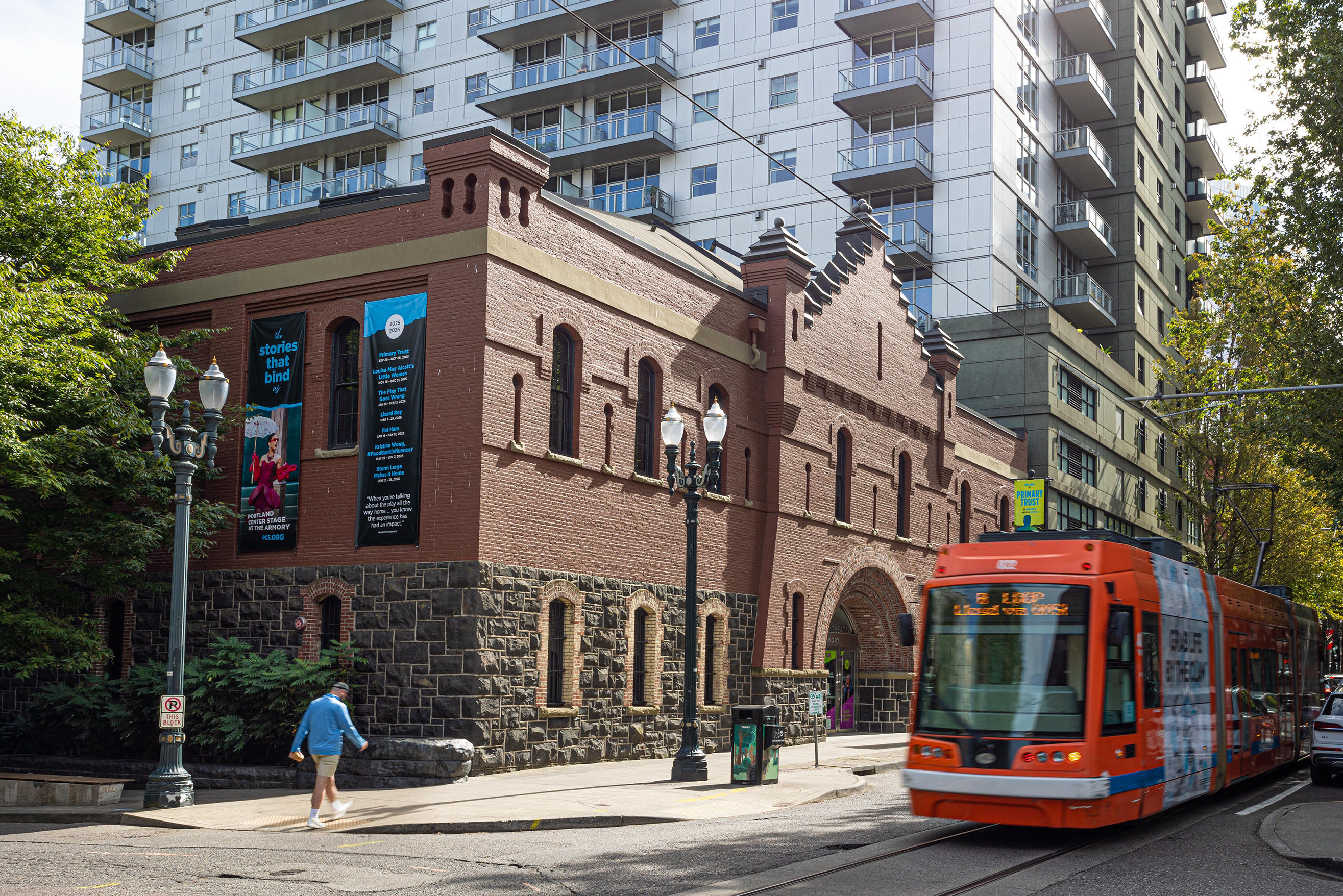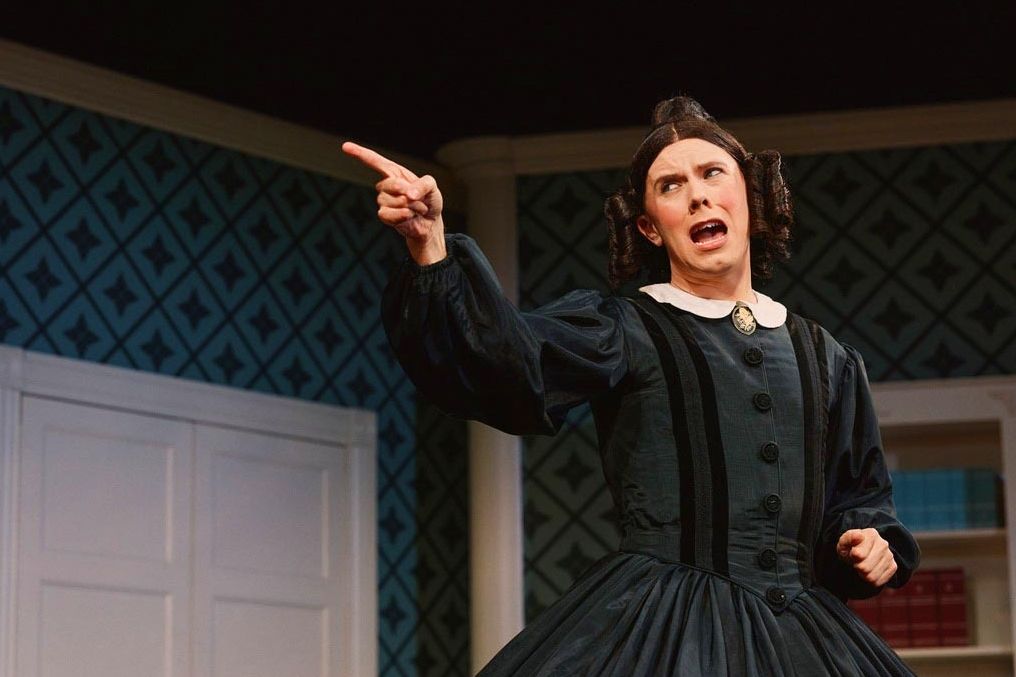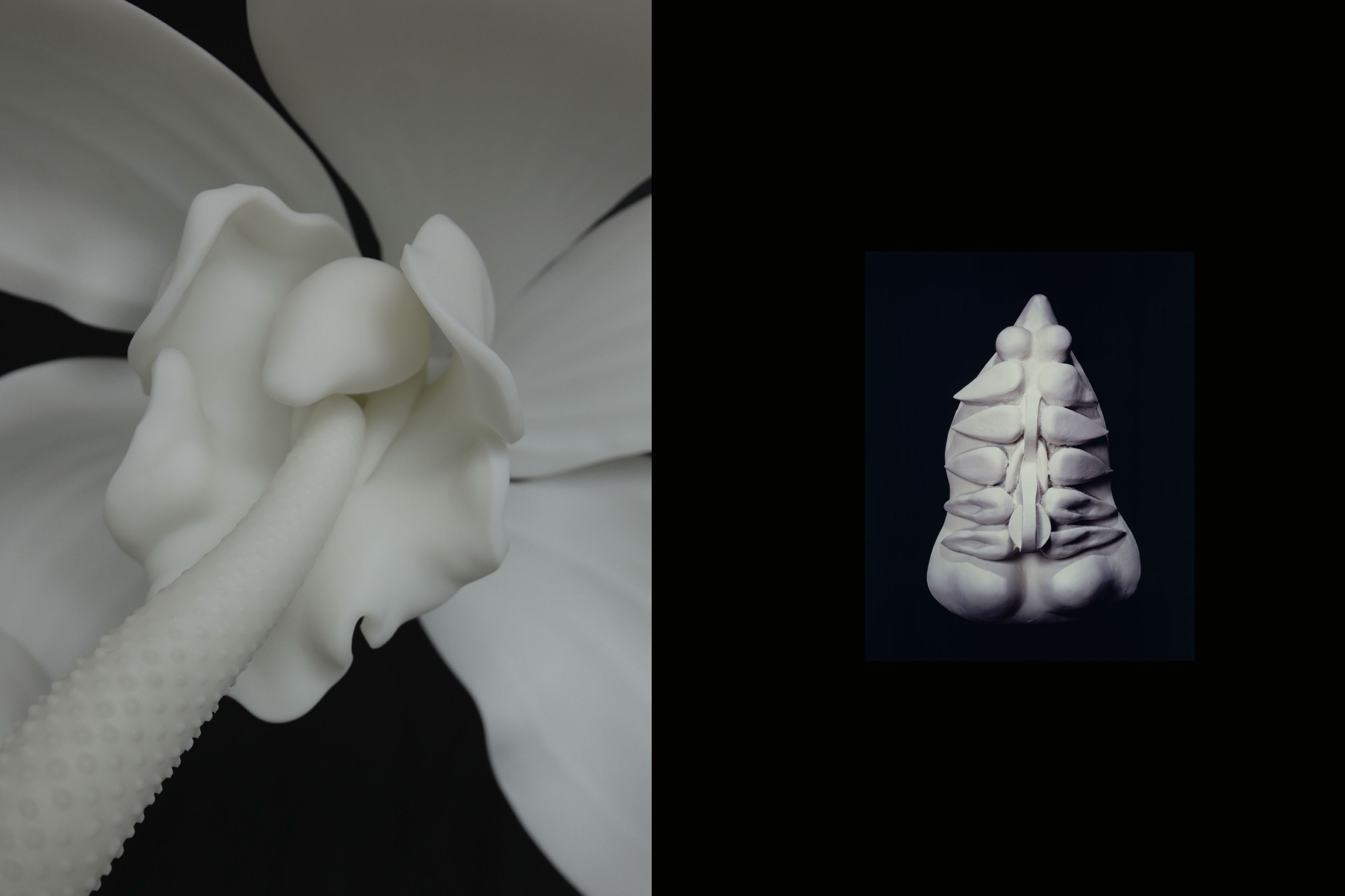Review: Fuse Ensemble's Sonnetscape

Opening with the “poet” hooded and sleeping on stage before waking with a violent start, Fuse Theatre Ensemble’s Sonnetscape snaps to life with a fervor that never abates as the nonlinear production plunges into the emotional world of Shakespeare’s sonnets—all 154 of them. A year in the making, and having won Best Choreography and Best Sound Design at Portland’s Outdoor Shakespeare Festival last year, the ambitious multimedia feast showcases the ensemble’s commitment to experimentation, while exploring the controversial, homosexual undertones in the playwright’s poetic oeuvre.
Unfolding on a spare black set decorated with large boxes, empty picture frames, a television set, and a standing mirror, the production stars Fuse’s Co-Artistic Director Rusty Tennant as the poet, a Shakespeare stand-in of sorts, and Associate Artistic Director Sara Fay Goldman as his nimbly pansexual muse. After stripping her dress to bind her chest and stuffing a pair of socks to put a bulge in her underwear, the poet removes the sock and re-ties the dress, only to use the socks as false breasts. He strips and reforms her gender over the course of the production to mold the object of his desire (although she spends most of the show convincingly playing a boyish masculinity only challenged by her Ace bandage bindings).
Fusing theater, dance, video by Andrew Bray, and a lushly complex sound design by Erik Jorgen Joregenson, the production moves through the sonnets in a mash-up of scenes and verse, editing some down to a single word and interweaving others. The poet marks our progress by scribbling the numbers on the theatre floor in white chalk. As we move through the 154, the two characters interact with each other while alternating the poems’ verses and sometimes even syllables. They dance through the poems emotions of passion, love, anger, and forgiveness, although their emotional overflow is sometimes our only narrative guide, as the text itself spins in disorienting circles that start to give a sense of déjà vu as we wonder, haven’t we explored this theme before?
But the work is not a narrative. If anything, it’s more comparable to a poetical version of Roland Barthes’s A Lover’s Discourse, touching on the themes, moments, and fragments that can interchange in endless permutations as they make up the ever-chaotic story of love. And this production certainly brims with passion, whether expressed by the interpretative dancing, the ravaging of Goldman’s character, or the madman-like scribbling on the theatre floor. Yet the sheer denseness and disorientation of the journey forestalls a strong emotional connection for the audience, making it more a voyage of the mind than of the heart.




